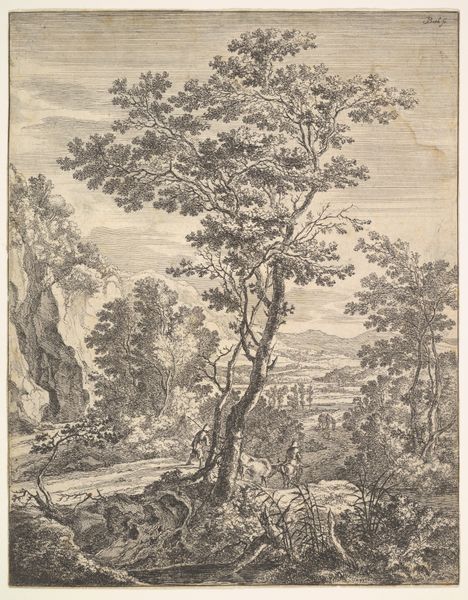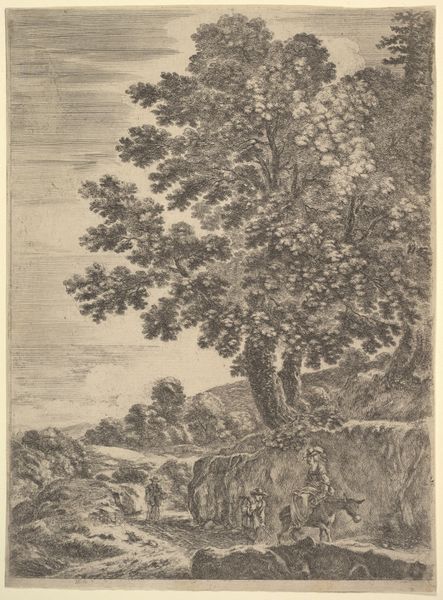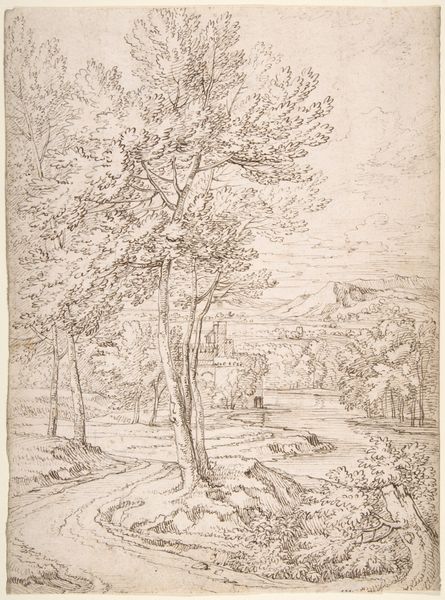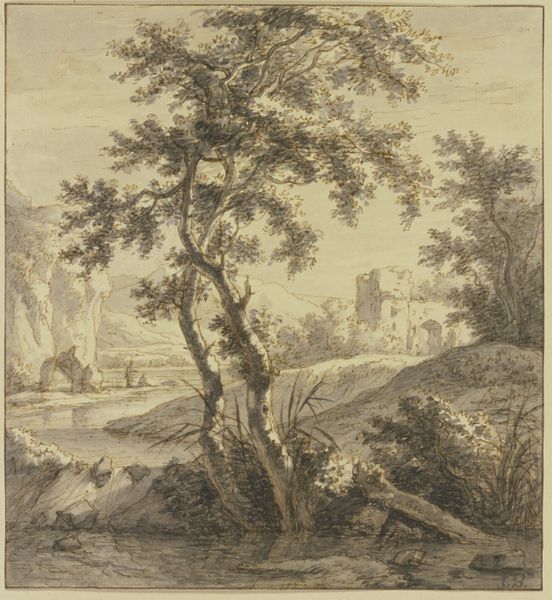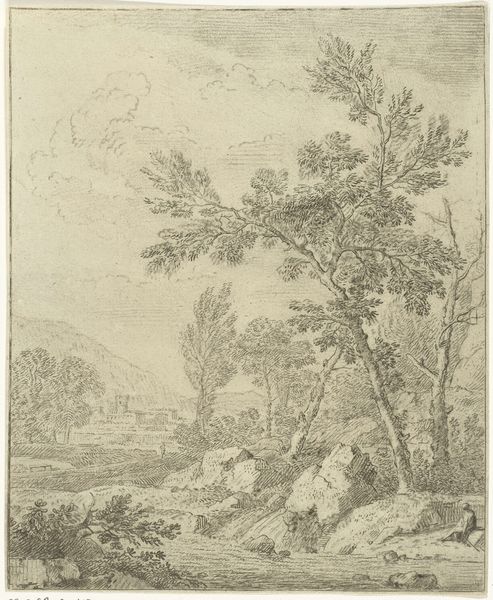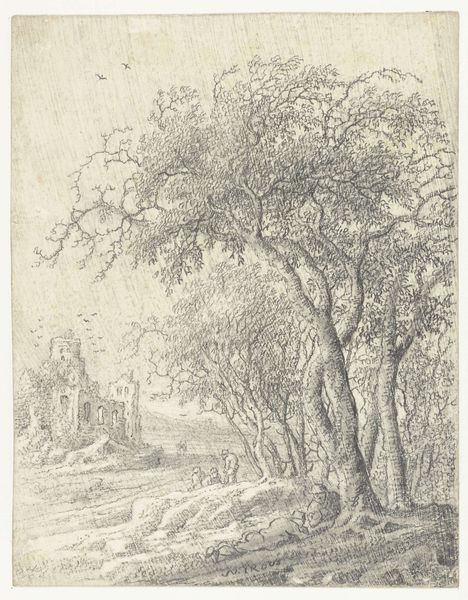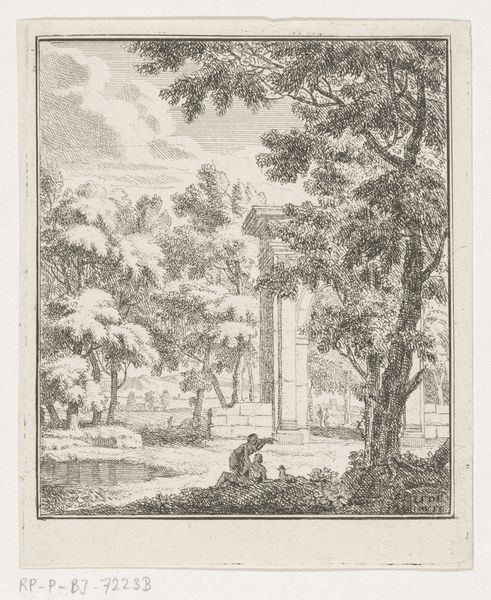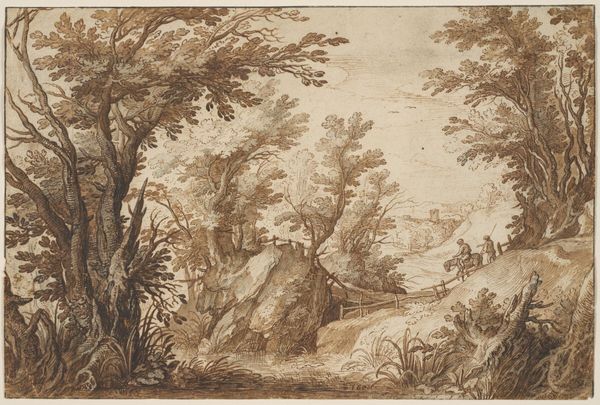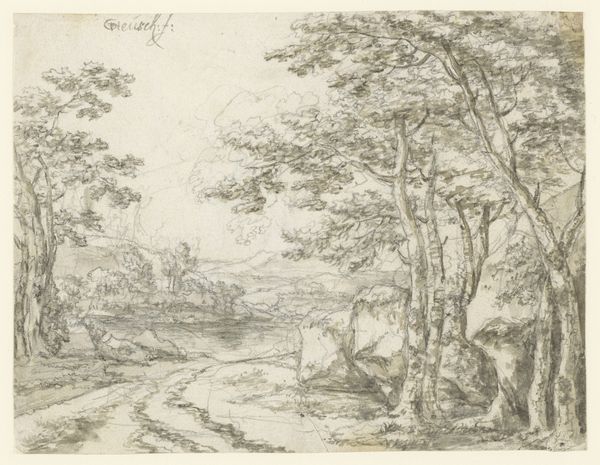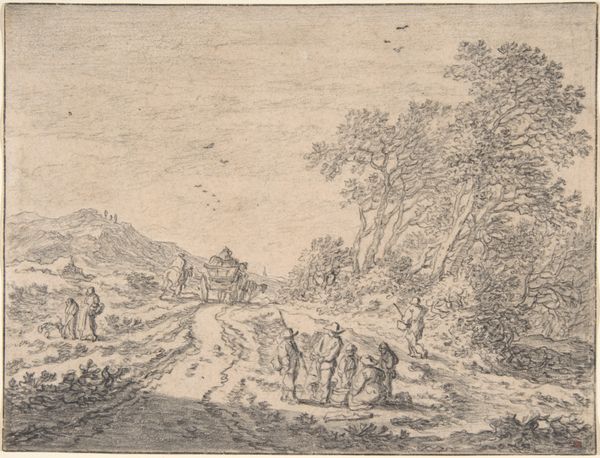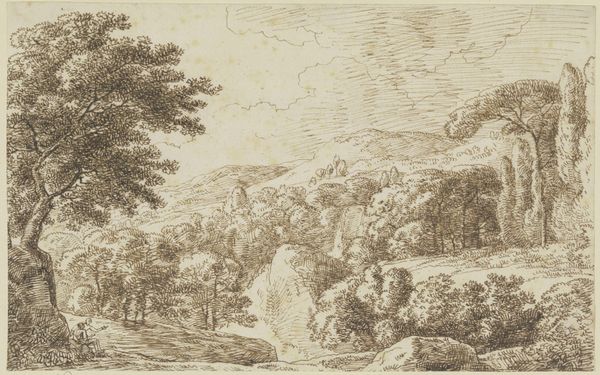
drawing, pencil
#
drawing
#
baroque
#
dutch-golden-age
#
landscape
#
pencil drawing
#
pencil
Dimensions: height 222 mm, width 169 mm
Copyright: Rijks Museum: Open Domain
Editor: This is Willem de Heusch's "Heuvelachtig landschap," or "Hilly landscape" created sometime between 1635 and 1692 using pencil on paper. The delicate linework makes the entire scene appear almost dreamlike. What feeling do you get from it? Curator: A landscape, like any symbolic space, is layered with meaning. The gentle slope, the aged trees… They evoke a sense of pastoral calm but consider the role of the artist within that culture. The Dutch Golden Age landscape wasn’t just about pretty scenery; it was tied to a burgeoning national identity. Editor: So, the landscape itself becomes a symbol of the Netherlands? Curator: Exactly! The topography, carefully chosen and rendered, became a reflection of Dutch pride and prosperity. How does that change how you see the composition? Editor: It makes me think about ownership. The Dutch had literally reshaped their land, so capturing it in art almost feels like further claiming it. Curator: Precisely! The artist isn't just representing a place but actively constructing a visual narrative, a cultural memory, through symbolic elements like the winding path which carries its viewers gaze into the serene distance. Does the image itself tell a story of time to you? Editor: It does now, because it looks less like a snapshot and more like a statement. Thank you! Curator: A landscape’s enduring symbolism is its connection to our history. It is as powerful as the land it portrays.
Comments
No comments
Be the first to comment and join the conversation on the ultimate creative platform.
